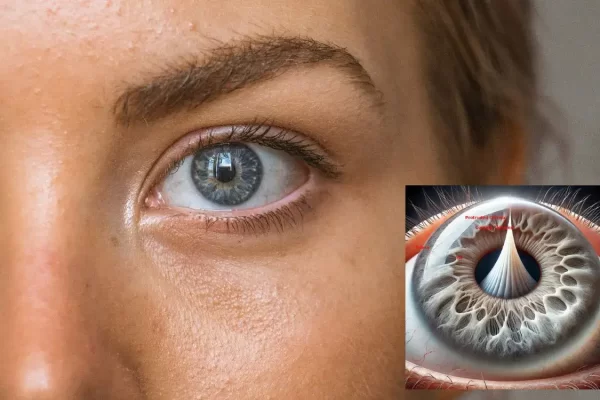The Defining Signs of a Progressive Keratoconus Condition
Progressive Keratoconus: Telling Signs and Symptoms
Having a healthy cornea is crucial. You see the world through its lens, which is the outer layer of your eye. The lens bends the light entering your eye to allow you to see clearly. It is composed of proteins and cells. You noticeably experience blurred and altered vision when your cornea thins and forms a conical bulge. This condition is called keratoconus.
Our highly skilled and respected team at Decarlo Optometry Placentia has treated many patients with keratoconus and given them their clear vision back. We offer advanced treatment for progressive keratoconus. Decarlo Optometry has been recognized as the best keratoconus specialist for corneal care by thousands of people. Dr. DeCarlo has been providing exceptional eye care. We invite you to read some of our clients’ testimonials we have received regarding our services.
Have any questions about Decarlo Optometry services? Read our FAQ section.


Why does Keratoconus Occur?
A protein known as collagen forms the cornea. Corneas become cone-shaped when the bonds between these fibers deteriorate, which leads to the loss of their smooth, normal shapes. Since keratoconus is known to have a genetic component, it’s crucial to schedule regular eye exams with your optometrist if you or someone in your family has the diagnosis. Despite this, one large study found that only 14% of conical cornea patients can identify a relative with the condition. Research has also found that eye rubbing may worsen corneal distortion in addition to genetic predisposition. Physiatrists may prescribe medicated drops to extinguish the itching in patients with it. Some patients with progressive keratoconus complain of a tendency to rub their eyes.
6 Common Symptoms of Keratoconus
During the teenage years and early twenties, conical cornea usually manifests as symptoms. Blurred vision is a common symptom of this disease, which worsens with every passing year. It is important to realize that many other more common eye conditions share many of the symptoms of keratoconus, even when it affects as many as 1 in 375 people. For this reason, it is imperative that you have an accurate diagnosis based on a proper examination. Diagnosis cannot be made solely on the basis of symptoms. You need to consult your eye doctor for objective clinical signs and measurements.
1. Visual Distortions
The retina of your eye cannot be properly focused if it bulges outward. When you have KCN, your vision may be blurry or distorted.
2. Frequently Changing Vision Prescriptions
A progressive condition such as keratoconus can result in changes in the prescription for contact lenses and glasses. Keratoconus might indicate frequent and regular changes in prescriptions. The eyeglass prescription can change several times within a relatively short period of time when the disease is in its early stages. With keratoconus, it is not uncommon for vision to be reduced, typically in one eye, despite using updated glasses. If the vision is blurred, squinting can temporarily help.
3. Light Sensitivity Issues
As a result of the changes in your eye’s shape, you may have distorted vision and be more sensitive to light. Your night vision is also affected by bright lights during the day. It is almost always the case that patients with conical cornea have difficulty seeing under dim lighting such as driving at night. The presence of multiple images and halos is not uncommon for those with keratoconus, even with soft contacts and updated glasses.
4. Vision is Clouded
The fogging or clouding of the eyes that are associated with keratoconus can occur suddenly in some instances.
5. Blurred Objects Near and Far
Keratoconus patients frequently complain of poor vision at all distances, even with the best optical glasses or soft contact lenses. There’s also a condition that causes blurry vision near and far called “irregular astigmatism”.
6. Itchy Eyes
Keratoconus is not necessarily characterized by itchy eyes on its own. You may have keratoconus if you find yourself complaining of itchy eyes and rubbing them as often as you do, AND you are experiencing the symptoms mentioned previously.
In the case that you currently suffer from all six of these symptoms, or you have suffered from them in the past, you should seek a professional eye exam to receive a diagnosis of keratoconus and rule it out.
How to Treat Keratoconus?
Keratoconus treatment depends on both the severity of the condition and the pace of the condition. Keratoconus can be treated in a number of different ways today. Soft disposable contact lenses and eyeglasses may be sufficient for people with mild disease. To restore adequate vision, rigid-surface contact lenses are needed in more advanced cases. Keratoconus patients with scleral contact lenses are among those who have been rehabilitating their vision through specialist contacts.
Additionally, if the corneal disease is progressive but mild, corneal cross-linking can help slow down its progression; and Intacs involves inserting segments of plastic into the layers of the cornea in hopes of reducing distortion. If all non-surgical alternatives have failed, corneal transplantation might be an option for a minority of patients with severe symptoms of keratoconus. The cornea can be transplanted using donated tissue from a deceased donor to replace diseased corneal tissue.
Do you need an ophthalmologist near you? Contact Us Today!
Planning to get your Keratoconus and dry eyes treated?
Come and visit our website to book an appointment. Contact Us Today!: (714) 996-1136





